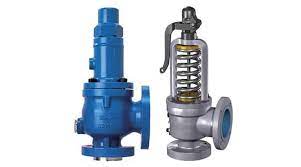Get In Touch
Get In Touch




A pressure relief valve, often referred to as a safety valve, is a critical device designed to protect pressurized systems and equipment from overpressure situations. It operates by automatically releasing excess pressure when it exceeds safe levels, preventing potential damage or catastrophic failure. Pressure relief valves are commonly used in various industrial applications, such as steam boilers, pipelines, pressure vessels, and hydraulic systems. They offer a reliable means of maintaining system integrity, ensuring the safety of personnel and equipment, and preventing the build-up of dangerous pressure that can lead to accidents or explosions.
Valve Type:Pressure Relief Valve Size Range: Various sizes are available, typically ranging from 1/2 inch to several inches, or even larger for industria applications.
Pressure Rating: The pressure rating indicates the maximum allowable pressure at which the valve can operate safely. It is typically expressed in pounds per square inch (PSI) or bars.
Set Pressure: The set pressure, also known as the opening pressure, is the pressure at which the valve begins to open and relieve excess pressure. It is typically adjustable within a specified range.
Flow Capacity: The flow capacity or discharge capacity is the maximum volume of fluid that the valve can release at its set pressure. It is typically expressed in cubic feet per minute (CFM) or gallons per minute (GPM). Body Material: Pressure relief valve bodies are commonly made from materials such as cast iron, carbon steel, stainless steel, or exotic alloys, selected based on the application's requirements.
Sealing Material: The sealing material, such as a soft seat or metal-to-metal seal, ensures a leak-tight closure when the valve is not relieving pressure.
Temperature Rating: The temperature rating specifies the range of temperatures within which the valve can operate safely, typically expressed in degrees Celsius (°C) or Fahrenheit (°F).
Inlet and Outlet Connections: The type and size of the inlet and outlet connections may vary based on the valve's design and the specific application.
Valve Design: Pressure relief valves can have various designs, such as spring-loaded, pilot-operated, or balanced bellows. The design is chosen based on the application's requirements.
Certifications: Pressure relief valves may need to comply with industry-specific standards and certifications, such as ASME (American Society of Mechanical Engineers) or API (American Petroleum Institute) standards, depending on the application and region.
Accessories: Some pressure relief valves may come with accessories like lifting levers, flanges, or drain connections to enhance their performance or ease of maintenance.
Set Pressure Adjustment: Many pressure relief valves allow for the adjustment of the set pressure within a specified range, offering flexibility in operation.
1. Boilers and Steam Systems: Pressure relief valves are a vital component in steam boilers to prevent overpressure and potential explosions, ensuring the safety of personnel and equipment.
2. Pressure Vessels: They are used in various industries with pressure vessels, such as chemical processing, petrochemical, and pharmaceutical, to protect against excessive pressure buildup.
3. Oil and Gas Industry: Pressure relief valves are deployed in pipelines, wellheads, and storage tanks to safeguard against overpressure and the release of hazardous materials.
4. HVAC Systems: In heating, ventilation, and air conditioning systems, pressure relief valves help manage the pressure of refrigerants, ensuring safe and efficient operation.
5. Water and Wastewater Treatment: These valves are used in water treatment plants and distribution systems to prevent pressure buildup and maintain the integrity of pipes and equipment.
6. Fire Protection Systems: Pressure relief valves ensure the controlled discharge of water or other extinguishing agents from fire protection systems to fight fires effectively.
7. Aerospace and Aviation: They are used in aircraft hydraulic systems to prevent overpressure and maintain the safety and functionality of critical components.
8. Food and Beverage Industry: Pressure relief valves are employed in the production of beverages, dairy products, and other food items to manage pressure in tanks and vessels.
9. Power Generation: They are used in power plants to protect equipment like turbines and generators from overpressure events.
10. Chemical and Petrochemical Plants: Pressure relief valves are essential in chemical processing and refining operations to safeguard against the release of hazardous chemicals in case of overpressure.
11. Pharmaceutical Manufacturing: These valves are used in pharmaceutical production facilities to prevent pressure buildup in reaction vessels and other critical processes.
12. Marine Industry: Pressure relief valves are installed on ships to manage pressure in various systems, such as boilers, engines, and hydraulic systems.
13. Mining and Metallurgy: They help protect equipment and personnel in mining operations by preventing overpressure in pipelines and storage tanks.
14. Oil Refineries: Pressure relief valves are crucial in oil refineries to maintain safe pressure levels during various refining processes.
15. Laboratory Equipment: In research and testing environments, these valves protect laboratory equipment and personnel from pressure-related hazards.


